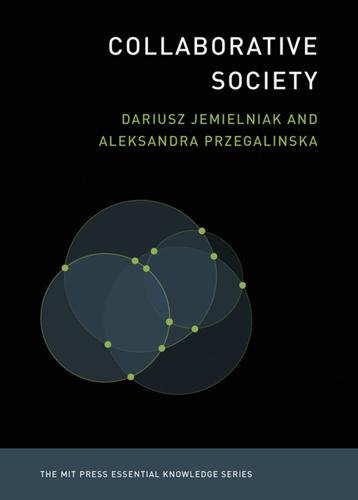
Collaborative Society
by
Dariusz Jemielniak
and
Aleksandra Przegalinska
Published 18 Feb 2020
Significantly, DIY and citizen science communities often also use nonprofit shared workspaces called “hackerspaces,” which manifest peer production principles and governance in the physical space.39 Hackerspaces serve as trading posts for people with different academic traditions, skills, and experiences.40 In many cases, such as smog detection in Poland or radiation detection in Japan, citizen science movements that started online successfully moved offline to stimulate not only local government reactions but also the involvement of academic and business communities, and thus they have had a supportive but supplementary role in relation to the scientific mainstream.41 Similarly, anti-shale gas extraction groups have been able to coordinate both online and offline activities to exert pressure on local municipalities.42 Citizen science takes on the risks of the bold experimentation that is decreasingly possible in traditional laboratories, owing in part to the advancing commercialization of science and in part to the ritualized process of climbing the career ladder (for instance by sticking to publishing safe articles about standardized studies).43 But the citizen science movement is countercultural only in the sense of challenging the established hierarchies and structures of knowledge creation, and not in questioning the science itself.
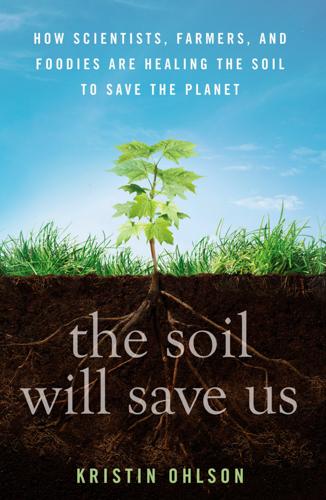
The Soil Will Save Us
by
Kristin Ohlson
Published 14 Oct 2014
Weber says that another problem with testing Savory’s approach is that healing the land with cattle takes 5 years or longer, but most scientific experiments are funded for only 3 years. Sometimes scientists can get funding for another 3-year study to piggyback on top of the first one, but that’s hard to do. But even though the Savory approach hasn’t been proved to a skeptical scientific mainstream, many ranchers have been impressed enough by Savory’s ideas to attend his training sessions and turn their own lands over to holistic management. Even without the blessing of mainstream science, the number of these practitioners keeps growing. Savory and Butterfield know of 10,000 ranchers doing holistic management, although there may certainly be more.
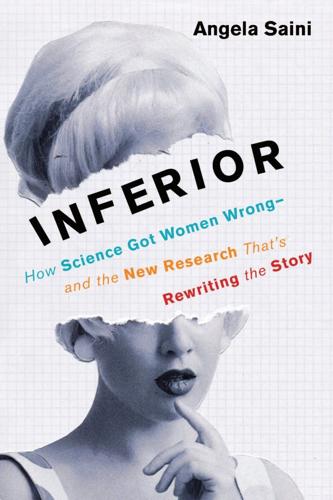
Inferior: How Science Got Women Wrong-And the New Research That's Rewriting the Story
by
Angela Saini
Published 29 May 2017
“It seemed clear to me that the history of the life on the earth presents an unbroken chain of evidence going to prove the importance of the female,” Gamble writes in the preface to the revised edition, which came out in 1916. But even an army of readers and the support of fellow activists couldn’t help win biologists around to her point of view. Her arguments were doomed to never fully enter the scientific mainstream, only circulate outside it. But she never gave up. She marched on in her campaign for women’s rights and continued writing for the press. Fortunately, she lived just long enough to see her own work as well as that of the wider movement gain real strength. In 1893 New Zealand became the first self-governing country to grant women the vote.
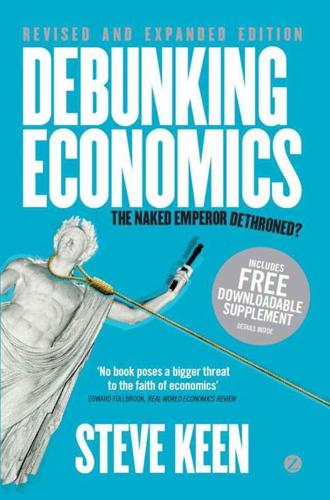
Debunking Economics - Revised, Expanded and Integrated Edition: The Naked Emperor Dethroned?
by
Steve Keen
Published 21 Sep 2011
Chaos theory has ‘not amounted to much’ in economics because its central tenets are antithetical to the economic obsession with equilibrium. In other sciences, chaos theory, complexity analysis and their close cousin evolutionary theory have had profound impacts. It shows how isolated economics has become from the scientific mainstream of the late twentieth and early twenty-first century that such ignorant views could be commonplace. The recurring nightmare of straight lines Virtually every critique detailed in this book has led to the result that some relationship between phenomena that economics argued was curved had to instead be a straight line.
…
However, over time I expect developments like these to dissipate, given the innately empirical focus of physicists. The complexity scorecard Complexity theory and Econophysics are among the ‘glamour’ areas of science in general today, and this affects economics, even given its relative isolation from the scientific mainstream. The techniques which complexity modelers in economics employ are thus ‘refertilizing’ economics with concepts from other disciplines. The economic fixation upon equilibrium appears quaint to these mathematically literate economists, and this alone may significantly undermine the hold which static thinking has on economics.
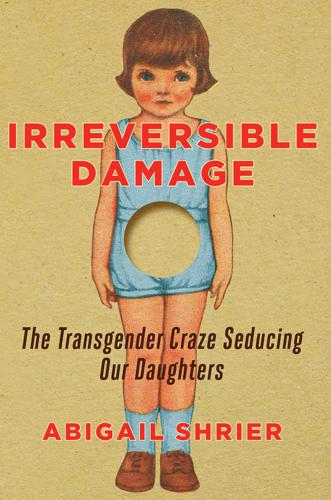
Irreversible Damage: The Transgender Craze Seducing Our Daughters
by
Abigail Shrier
Published 28 Jun 2020
No mention is made of the fact that there are no diagnostic or empirical criteria for deciding that a biological girl is in fact “really a boy.” Nonetheless, this drivel is taught with the same sobriety and apparent thoroughness as facts about human reproduction and sexually transmitted disease. Imagine if anti-vaxxer groups—also representing a position miles outside the scientific mainstream—were brought in to speak to students, asked to provide materials for health class, allowed to present their own versions of science and offered a lectern from which to argue for the connection between autism and vaccination. It does not seem far-fetched to imagine that more students who had been vaccinated would begin to notice themselves fixating, struggling with empathy, misreading social cues, engaging in repetitive movements, tending to self-harm, and diagnose mild cases of autism in each other.

The Sirens of Mars: Searching for Life on Another World
by
Sarah Stewart Johnson
Published 6 Jul 2020
Einstein’s theory of special relativity had been published, and space science swerved toward astrophysics, slowly relegating planetary science to a backwater it would not emerge from in Lowell’s lifetime. Lowell continued to write and lecture, seeking to inspire students as he became more and more marginalized from the scientific mainstream. He died of a stroke in 1916. In a moving tribute, his secretary described him as “filled by the warmth of his fire; thrilled by his achievements, with eye single towards the discovery of ‘the light that shifts, the glare that drifts’—which is truth itself.” * * * — AND YET THOSE lines that Schiaparelli had documented and that had so consumed Lowell continued to haunt Mars science.

How Not to Network a Nation: The Uneasy History of the Soviet Internet (Information Policy)
by
Benjamin Peters
Published 2 Jun 2016
And just as cybernetics was mobilizing its intellectual defenses, it also found institutional fortification in the creation of Akademgorodok, a new “scientific township at Novosibirsk” in Siberia. Created in the spring of 1957, this city of science (formally part of the city of Novosibirsk) proved a refuge of privilege and relative intellectual freedom for over 65,000 Soviet scientists, including Aleksei Lyapunov, a pioneering cyberneticist.63 Before the Soviet scientific mainstream could adopt cybernetics, the attendant scholarly communities had to be prepared for an about-face in the official Soviet attitude toward an American-born discipline. The first sign of this turnaround came not from Moscow but from a neighbor in the near abroad: in 1954 in Warsaw, six “Dialogues on Cybernetics” surfaced, and they approached cybernetics in a critical dialectical tone that was serious enough to signify that the topic deserved real discussion.64 In the meantime, three mathematicians and an unlikely philosopher-critic closer to Moscow set off on a mission to remake Soviet cybernetics from the inside out.
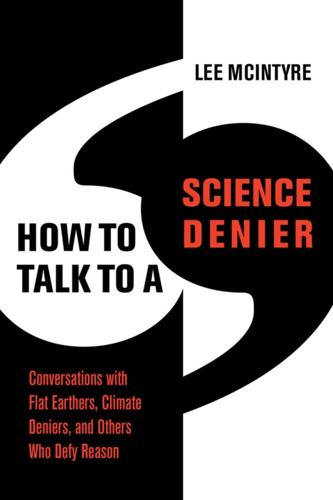
How to Talk to a Science Denier: Conversations With Flat Earthers, Climate Deniers, and Others Who Defy Reason
by
Lee McIntyre
Published 14 Sep 2021
Now, with his wife, he ran a conservation research institute devoted to saving native species and their habitats. When I donated money for the carbon offsets after my trip to the Maldives, I sent Ted a check to plant a quarter-acre of trees on one of his projects.9 On climate issues, his beliefs were solidly in the scientific mainstream. But on GMOs? We closed with my plea for him to take a day and think it over, then let me know whether I could use him for my project. “But,” I warned him, “if we talk again, I’m going to try to convince you.” “Well,” he said, “maybe I’ll end up convincing you.” That night a text pinged in the middle of the night saying it was OK.

Tripping on Utopia: Margaret Mead, the Cold War, and the Troubled Birth of Psychedelic Science
by
Benjamin Breen
Published 16 Jan 2024
In the early 1950s, L. Ron Hubbard had adapted much of this language (and, at least at first, the same drugs) as he sought to turn narcosynthesis into a mass movement. But he had done so outside the scientific establishment. The psychedelic therapy of the late 1950s seemed, for a time, to be entering the scientific mainstream while also offering a revolutionary new improvement on the older drugs (such as sodium amytal), which had dangerous side effects and none of the creativity-inducing, transcendent, or mystical qualities of psychedelics. Betty Eisner was among the most ardent backers of this view. By the spring of 1958, she had decided that psychedelics were genuinely revolutionary substances that “speed up the process of evolution” by helping their users achieve a state of “clear”—a mind that had been expanded via the integration of repressed unconsciousness traumas into conscious experience.
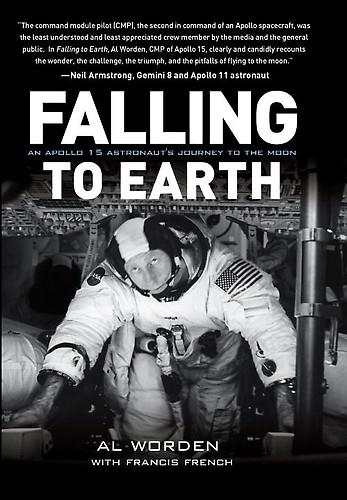
Falling to Earth
by
Al Worden
Published 26 Jul 2011
He and his wife were separating, but Ed didn’t want to proceed with a full-blown divorce. He was worried how a divorce might affect his astronaut career and preferred to wait until after his flight. I liked Ed. He was different from your average astronaut. Fascinated by psychic phenomena and spiritual energy, he studied “new age” ideas that were far outside the scientific mainstream. It didn’t fit our NASA work, so Ed kept his interests pretty much to himself for a long time. At my apartment, however, we’d have long discussions into the night exploring what he called “the nature of consciousness,” including his plan to try ESP experiments on his moon mission. Ed’s Apollo 14 mission would set down where Apollo 13 had planned to land; NASA was investing two missions in one landing zone.

More Everything Forever: AI Overlords, Space Empires, and Silicon Valley's Crusade to Control the Fate of Humanity
by
Adam Becker
Published 14 Jun 2025
“While there are a lot of things which could very clearly cause a very large amount of human misery and damage, it’s quite unclear how [global warming] could cause the extinction of humanity or some kind of irrevocable collapse of civilization,” Ord said on the podcast. There are two issues here. The first is that Ord and MacAskill are out of step with the scientific mainstream opinion on the civilizational impacts of extreme climate change. In part, this seems to stem from a failure to imagine how global warming can interact with other risks (itself a wider issue with their program), but it’s also a failure to listen to experts on the subject, even ones they contact themselves.16 “When I try to imagine a world in which the tropics are largely uninhabitable and unproductive (from 30 degrees north to 30 degrees south, that is half the area of the planet and most of the biological productivity) I find it hard to believe that there won’t be such tipping points due to famine, migration and conflict, that will make it difficult for our civilization to survive,” Watson tells me.17 Science can help fill in that imaginative gap: the last time global temperatures were 15 to 20 degrees Celsius higher than they are now was about fifty-six million years ago, during the Paleocene-Eocene Thermal Maximum (PETM).
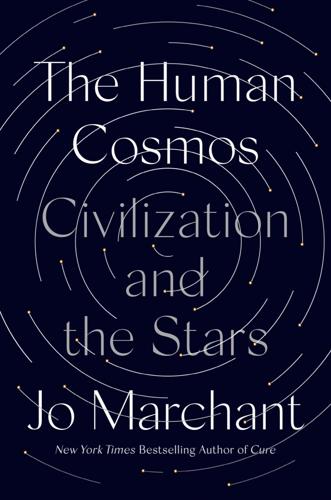
The Human Cosmos: A Secret History of the Stars
by
Jo Marchant
Published 15 Jan 2020
“We are physical beings made of large collections of particles governed by nature’s laws . . . We feel that we are the ultimate authors of our choices, decisions and actions, but the reductionist story makes clear that we are not. Neither our thoughts nor our behaviors can break free of the grip of physical law.” For today’s scientific mainstream, this is the final step in our understanding of reality, the ultimate destination of the journey traced in this book. There is no mental realm that physical measurements can’t reach, and even if science hasn’t yet filled in all the details, its approach and methods can ultimately tell us everything we need to know.
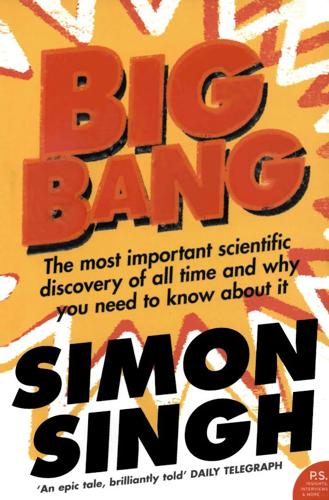
Big Bang
by
Simon Singh
Published 1 Jan 2004
Perhaps the utter disappointment of not having a share of the Nobel prize proved too much. Alpher gradually recovered, but he would continue to be dogged by ill health. The Necessary Sprinkling of Wrinkling The award of the Nobel prize to Penzias and Wilson marked the point at which the Big Bang model became part of the scientific mainstream. In due course, this model of cosmic creation would even find recognition in the Smithsonian’s National Air and Space Museum. It was not easy to construct an exhibit which represented the theory and observation that lay behind the development of the Big Bang model, but the curators made some imaginative decisions.
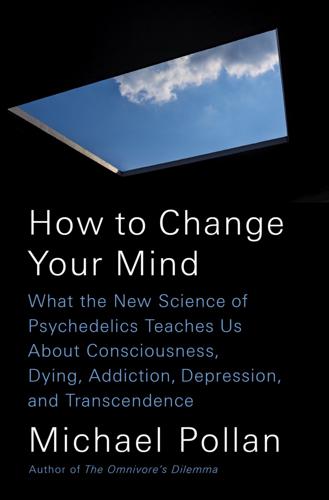
How to Change Your Mind: What the New Science of Psychedelics Teaches Us About Consciousness, Dying, Addiction, Depression, and Transcendence
by
Michael Pollan
Published 30 Apr 2018
Stamets has himself “published”—that is, identified and described in a peer-reviewed journal—four new species of Psilocybe, including azurescens, named for his son Azureus* and the most potent species yet known. But while Stamets is one of the country’s most respected mycologists, he works entirely outside the academy, has no graduate degree, funds most of his own research,* and holds views of the role of fungi in nature that are well outside the scientific mainstream and that, he will gladly tell you, owe to insights granted to him by the mushrooms themselves, in the course of both close study and regular ingestion. I’ve known Stamets for years, though not very well and always from what I confess has been a somewhat skeptical distance. His extravagant claims for the powers of mushrooms and eyebrow-elevating boasts about his mushroom work with institutions like DARPA (the Pentagon’s Defense Advanced Research Projects Agency) and NIH (the National Institutes of Health) are bound to set off a journalist’s bullshit detector, rightly or—as often happens in his case—wrongly.
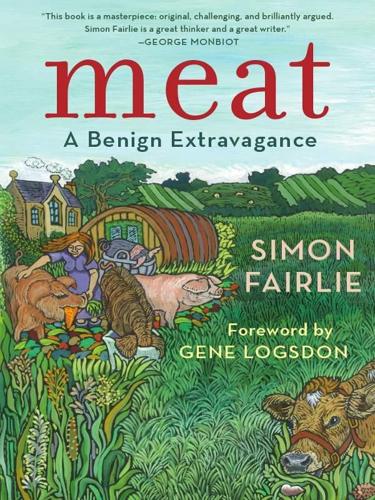
Meat: A Benign Extravagance
by
Simon Fairlie
Published 14 Jun 2010
An increase in soil carbon may also result in the release of other greenhouse gases: pasture sequestrates carbon, but grazing animals release methane. Similarly, adding nitrogen, by planting legumes for example, increases vegetation and hence the amount of carbon which the soil can potentially assimilate; but it also releases nitrous oxide into the atmosphere. Within the scientific mainstream there is little consensus as to whether soil carbon sequestration can only have a minor impact upon our overall greenhouse gas emissions, or whether it has the potential to solve all our problems. One scientific paper, authored by nine scientists, states that ‘the IPCC estimates for the global mitigation potential of carbon sequestration in agricultural soils are 0.4 to 0.6 billion tonnes per year (over 100 years) – which is less than ten per cent of our current annual carbon emissions from fossil fuels … From this perspective, soil carbon sequestration can make only modest contributions to the overall need for mitigation of atmospheric CO2 build-up.’ 8 Yet a year later, one of the nine authors, Dr Rattan Lal – who is the world’s number one guru on soil carbon, and frequently cited by the IPCC – stated that ‘the maximum potential rate of Soil Organic Carbon (SOC) sequestration of three billion tonnes of carbon per year is high enough to almost nullify the annual increase in atmospheric concentration of CO2 at 3.4 billion tonnes per year.’9 A perusal of the mainstream scientific literature on soil carbon sequestration suggests that livestock may have something to offer, but perhaps not a lot.

MacroWikinomics: Rebooting Business and the World
by
Don Tapscott
and
Anthony D. Williams
Published 28 Sep 2010
Depending on your perspective there are two competing analyses of what “climategate” means, says Fred Pearce, an environment writer who led a major investigation into the controversy on behalf of the The Guardian.6 Climate scientists tend to see it as the mob storming the lab—the story of a malicious attempt to disrupt, cross-question, belittle, and trash the work of mainstream scientists. Their critics see it as democracy in action—the outcome of an entirely laudable effort by amateur scientists and others outside the scientific mainstream to gain access to the complex data sets behind some of the climate scientists’ conclusions and to subject them to their own analysis. While there is no reason, in our minds, to question the integrity of the world’s climate scientists, there is evidently some truth in both narratives. Pearce’s investigation found evidence of slipshod use of data and apparent efforts to cover that up.
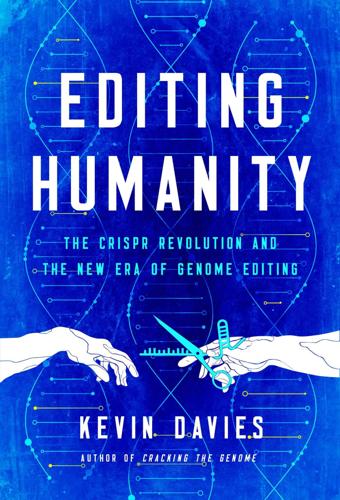
Editing Humanity: The CRISPR Revolution and the New Era of Genome Editing
by
Kevin Davies
Published 5 Oct 2020
Earlier methods for gene editing were conceived in the early 2000s, refined, and even entered the clinic before the advent of CRISPR. Urnov and his colleagues at Sangamo coined the term “genome editing” in 2005 while refining a technology called zinc finger nucleases (ZFNs), which is still in clinical use. In 2011, the year before CRISPR burst into the scientific mainstream, the journal Nature Methods anointed genome editing its “Method of the Year.” ZFNs and another gene-editing platform called TALENs have their admirers, but were too fussy and expensive to break out the way CRISPR has. CRISPR takes the premise of other forms of genome editing and (in the parlance of Spinal Tap) turns it up to 11.
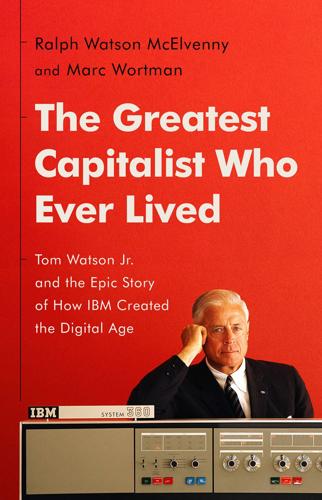
The Greatest Capitalist Who Ever Lived: Tom Watson Jr. And the Epic Story of How IBM Created the Digital Age
by
Ralph Watson McElvenny
and
Marc Wortman
Published 14 Oct 2023
Companies rented time on the headquarters’ 701.57 At a whopping $17,000 a month rental, only nineteen of the early mainframe machines were ever installed, including IBM’s own.58 But the purchasers included several leading federal nuclear labs, Lockheed, and Monsanto Chemical, employing it for a wide variety of complex scientific and business calculations—aircraft engineering simulations, seismic studies, financial reporting, payroll, and more.59 The potential for a multiplicity of uses and demand for the 701 exceeding projections signaled that computers might indeed become a tool for the business and scientific mainstream. For IBM, this dawning awareness marked a radical turning point in its ambitions for leading the electronic data-processing future. Within the business world, however, computers were still known as “UNIVAC machines.” When Sperry acquired Remington Rand, UNIVAC’s maker, in 1955, the company had already installed thirty large-scale business computers to IBM’s four.60 IBM would need to move decisively if it hoped to find a place in the new market with the Univac division now well capitalized by its Sperry Rand parent.

NeuroTribes: The Legacy of Autism and the Future of Neurodiversity
by
Steve Silberman
Published 24 Aug 2015
He ended his speech by saying that it was the duty of his fellow scientists to “enlighten government in the prevention of the spread and multiplication of worthless members of society, the spread of feeblemindedness, of idiocy, and of all moral and intellectual as well as physical diseases.” These views of race and disability were not fringe science—the ranting of a deranged extremist at the academic equivalent of a Ku Klux Klan rally. They were the perspective of a broad swath of the scientific mainstream in America after World War I, backed by ongoing research in the United States and Europe funded by major foundations like the Carnegie Institution and the Rockefeller Foundation. Of the fifty-three papers presented at the conference, forty-one were the work of American scientists. The honorary president of the congress was Alexander Graham Bell, inventor of the telephone and telegraph.
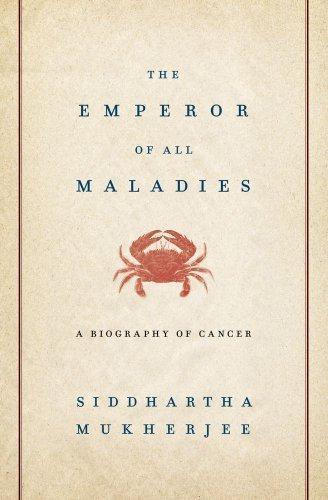
The Emperor of All Maladies: A Biography of Cancer
by
Siddhartha Mukherjee
Published 16 Nov 2010
Over the next decade, the cancer virus program siphoned away more than 10 percent of the NCI contract budget—nearly $500 million. (In contrast, the institute’s cancer nutrition program, meant to evaluate the role of diet in cancer—a question of at least equal import—received one-twentieth of that allocation.) Peyton Rous was rehabilitated into the scientific mainstream and levitated into permanent scientific sainthood. In 1966, having been overlooked for a full fifty-five years, he was awarded the Nobel Prize for physiology and medicine. On the evening of December 10 at the ceremony in Stockholm, he rose to the podium like a resurrected messiah. Rous acknowledged in his talk that the virus theory of cancer still needed much more work and clarity.
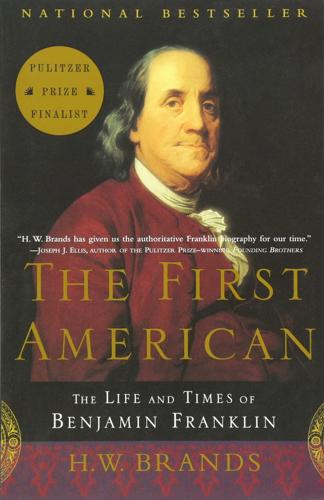
The First American: The Life and Times of Benjamin Franklin
by
H. W. Brands
Published 1 Jan 2000
Moreover, as one who had been attempting to establish a network of scientific communication in America, he appreciated the importance of word of mouth (or word of post) in keeping up with the latest discoveries. Philadelphia might be the hub of British North America, but it remained an ocean away from the scientific mainstream. Franklin could not help worrying that his best experiments were simply recapitulating work done in Europe, work he had not heard of yet. But the approbation of the Royal Society, the most distinguished scientific body of its day (rivaled only by the French Academy of Sciences), gave Franklin every reason to carry on.

Rationality: From AI to Zombies
by
Eliezer Yudkowsky
Published 11 Mar 2015
Tegmark’s Our Mathematical Universe discusses a number of relevant ideas in philosophy and physics.5 Among Tegmark’s more novel ideas is his argument that all consistent mathematical structures exist, including worlds with physical laws and boundary conditions entirely unlike our own. He distinguishes these Tegmark worlds from multiverses in more scientifically mainstream hypotheses—e.g., worlds in stochastic eternal inflationary models of the Big Bang and in Hugh Everett’s many-worlds interpretation of quantum physics. Yudkowsky discusses many-worlds interpretations at greater length, as a response to the Copenhagen interpretations of quantum mechanics.